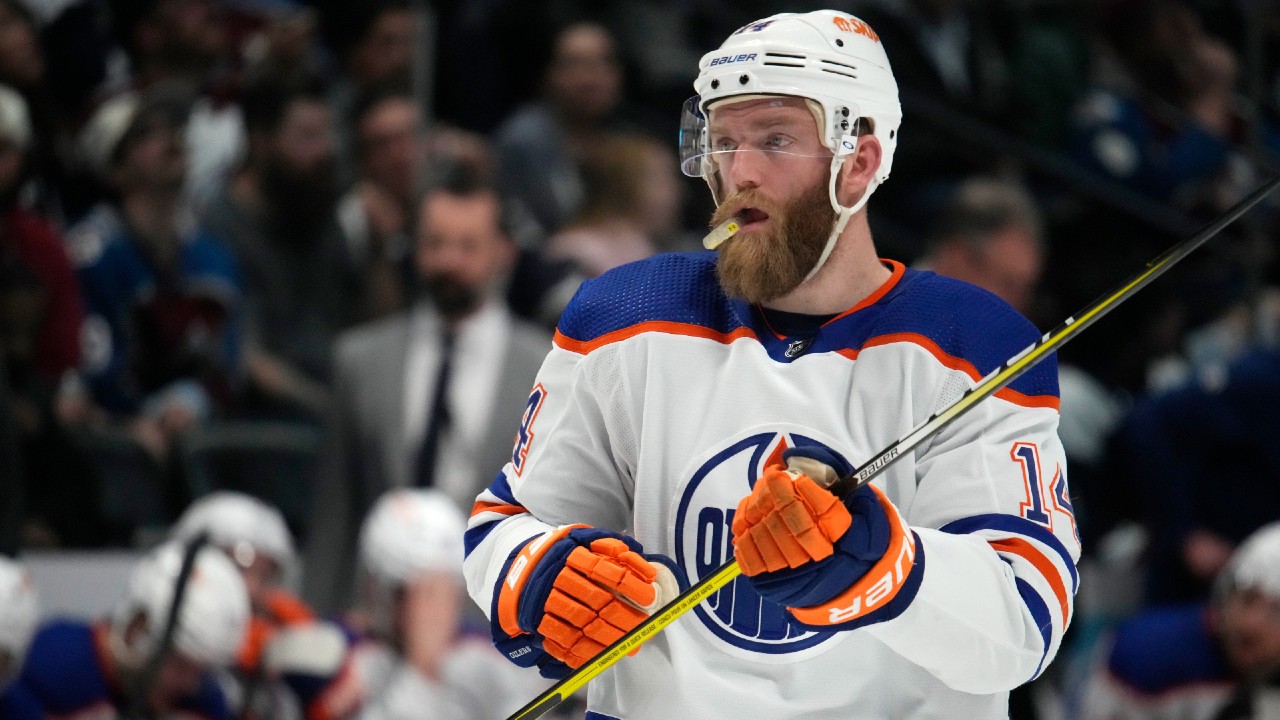63 Goals Gone: Can the Oilers’ New-Look Forward Corps Replace the Firepower Lost in an Offseason That Redefined Edmonton’s Cup Math?
When the dust settled on the Edmonton Oilers’ summer shuffle, the numbers told a story far more menacing than any social-media speculation: 63 goals vanished from the roster. Gone were players who had combined to do more than keep Edmonton afloat in those middle minutes of games—they were the ballast that balanced the gravitational pull of Connor McDavid and Leon Draisaitl. In a league where one-goal playoff games decide legacies, the erosion of 63 goals is not a statistic; it’s an existential question. Have the Oilers replaced what walked out the door, or are they betting their Stanley Cup aspirations on internal growth and a few calculated gambles?
To grasp the gravity, you need to strip the gloss from those digits and see their texture. Those 63 goals weren’t all pretty one-timers or highlight-reel breakaways; many were the greasy finishes in tight, the second-effort tap-ins on tired penalty kills, the backhanders in mid-February that turned travel-weary losses into grinding wins. They were goals scored when stars were on the bench or trapped in defensive-zone coverage. They were margin goals—the difference between two points and zero in a standings table where home ice and playoff positioning are currency. Lose that stack, and the scoreboard may not tilt as easily even if McDavid and Draisaitl remain orbital suns burning through defensive schemes.
So how did Edmonton arrive here? Cap reality. Contenders mortgage comfort for flexibility, and the Oilers are no different. Extensions loom, arbitration bites, and the slow inflation of star contracts forces hard choices. Depth scorers who once came cheap now command term and dollars elsewhere. A gritty winger pricing himself into another bracket leaves, a power-play specialist squeezes one more payday from a desperate rival, and suddenly you’re staring at 63 goals evaporated without a single puck dropping in anger. That exodus doesn’t indict management as much as it spotlights the brutal arithmetic of the modern NHL: you can pay for superstardom, or you can pay for insurance against its off nights; rarely both without creative gymnastics.
And so, the question that grips Edmonton is whether the ledger-balancing summer transactions will yield enough offense to keep the Oilers among the apex predators of the Western Conference. Did the team backfill with proven shooting percentage or with hope disguised as upside? The names that have trickled in bring intrigue more than certainty. There are value bets: players whose counting stats undersell their expected-goals charts, whose deployment in previous stops muted weapons that Edmonton hopes to unsheathe. There are reclamation projects that whisper “change-of-scenery magic” in a league addicted to second chances. And there are rookies—the siren promise of cheap production riding shotgun on elite play-driving centers. Hope is not a plan, but it is often the first ingredient in roster construction when dollars constrict.
Consider the internal growth narrative. Management’s posture suggests faith in players already in Oilers colors blossoming into more pronounced roles. That means betting that Dylan Holloway’s flashes turn into consistency, that Ryan McLeod can sustain transition speed and convert breakaways that too often died in the goalie’s crest, that depth wingers add enough finish to drag the bottom six into positive goal share. Development curves are not linear, and optimism doesn’t pay dividends in April without real uptick by December. But this is the leverage point of a capped-out contender: you draft and you develop, and if your bets hit, you wear a ring; if they stall, you become another cautionary tale of wasted prime years.
Then there is the big-picture layer—the psychological weight of lost offense. Opponents game-planned Edmonton last year knowing secondary threats could punish lapses; that specter loosens defensive glue, stretches penalty kills, and gives McDavid an extra half-second of oxygen. Strip that away and you risk shrinking the ice for your stars, inviting layers of collapse and daring the supporting cast to shoot through double-stacked lanes. If the new depth cannot credibly punish that disrespect, the Oilers’ vaunted attack becomes easier to scheme for, if never easy to stop. It’s not that McDavid and Draisaitl can’t carry outrageous loads—they can and have—but playoff attrition devours teams without insulation. Ask last year’s elimination tape how thin margins felt when tertiary lines generated wind but no finish.
From a systems lens, Edmonton’s offensive identity thrives on controlled entries and layered pressure. That engine sputters when the second and third waves lack finishing teeth because defenders can sag toward primary weapons, daring kick-outs to less trusted sticks. The offseason chatter hints the Oilers might lean heavier into forecheck-driven cycles to manufacture interior chaos rather than living off clean rushes alone. That stylistic tweak works only if the new personnel can win board battles, stay net-present, and cash rebound chaos—skills that are less about name cachet and more about honest repetition. Training camp and early-season analytics will reveal whether the revamped forward corps bends toward that blueprint or struggles to sustain zone time against disciplined breakouts.
Special teams loom large in the replacement equation. Edmonton’s power play has been hockey’s cheat code, erasing deficits and demoralizing penalty-kill units with surgical cruelty. Losing 63 goals means stripping away some of the depth that kept the top unit fresh and the second unit dangerous enough to prevent wholesale penalty-kill gambles. If the Oilers must double-shift stars to maintain power-play lethality, they invite fatigue creep and injury risk into an 82-game marathon. Conversely, if one of the new faces seizes a bumper role or flank slot and thrives, Edmonton recovers a chunk of that lost output without sacrificing structure. It is no exaggeration to say that two or three high-leverage power-play tallies in March could swing playoff seeding, which, in turn, dictates travel and matchup probabilities—silent variables in the Cup equation.
Contextualizing the Western Conference amplifies the stakes. Vegas remains a ruthless machine; Dallas and Colorado oscillate between contender and juggernaut; even fringe teams boast top-end skill. You do not stumble into May without redundancy of offense because injuries and matchups will strip Plan A from your clipboard. If the Oilers’ answer to “where do the missing 63 goals come from?” is “by committee,” that committee had better graduate from theory to practice by Christmas. McDavid’s brilliance can blur flaws, but it cannot erase them when series stretch, whistles tighten, and ice becomes real estate sold at blood price.
Could there be an external jolt coming? Edmonton’s front office is no stranger to aggressive midseason maneuvers. A trade-deadline swing for a middle-six sniper or versatile winger is plausible, especially if early trends show a goals-for dip that analytics confirm is not just shooting luck. But those lifelines cost futures, and the Oilers’ draft capital has already been harvested for past pushes. Banking on a March rescue mission is like planning your mortgage around lottery tickets; smart organizations prefer to insulate risk in July, not chase salvation in spring. Still, this is a win-now organism, and win-now organisms behave accordingly when the standings tighten and core primes tick louder.
For now, training camp becomes the laboratory where answers incubate. Beat writers will count every rep Holloway takes in the top six, every scrimmage where a newcomer flashes chemistry with Draisaitl, every power-play drill that reveals who might steal second-unit oxygen. Advanced metrics in preseason—expected goals, shot quality, retrieval rates—will hum beneath the surface, either validating optimism or foreshadowing crisis. Fans will cling to every glimpse because they know the math: subtract 63 from last year’s total and project it against the division’s rising bar. If the delta isn’t closed by organic growth or surprise pop, April heartbreak writes itself.
And that is the pulse beneath the rumor static and roster sheets—the sense that Edmonton stands at another inflection point in the McDavid-Draisaitl epoch. The organization has done much right: improved goaltending stability, fortified blue-line mobility, built a cultural spine that survived early turbulence. Yet windows in this league do not politely wait for perfect conditions; they slam shut with the cap’s cold finality and the aging curve’s ruthless math. Sixty-three goals departed is not just a stat; it is a siren reminding everyone from the front office to the farthest row that opportunity is perishable.
Can the Oilers replace those goals? On paper, maybe—projection models will strain to carve optimism from historical comps and expected shooting percentages. On the ice, the answer will come in dirty-area duels in Winnipeg on a Tuesday, in February puck races against checking lines built to suffocate hope, in the chill of a playoff Game 5 where one bounce separates a legacy from a lament. The Oilers believe they have enough, or they would not have charted this path. Belief, though, is an opening faceoff, not a guarantee. In a season that will test depth, creativity, and nerve, Edmonton’s ability to replace those 63 lost goals—or mutate into a team that wins differently—may script the difference between lifting silver and lifting excuses.



